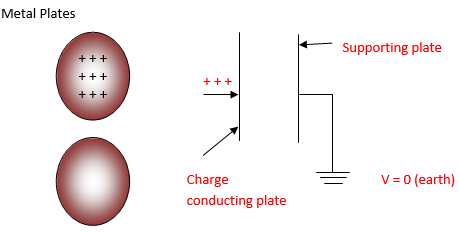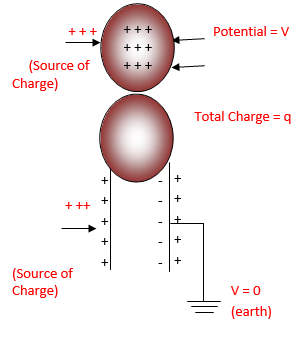Parallel Plate Capacitor Introduction
Description:
We know that, with the increase in number of charge in a capacitor, the electric field increases. After a limit electric field reaches a breakdown field and charge starts leaking. In order to increase the capacitance of the capacitor in such a way that it can store more number of charge , without increasing the electric field. This can be achieved by using parallel plate capacitor.
In parallel plate capacitor, two metal plates are taken. These plates are kept parallel to each other. The side view of the parallel plates will appear as shown in figure

The charge carrying plate is connected to a source of charge (battery or a dynamo) whereas the supporting plate is connected to Earth carrying zero potential.
Positive Charges from the battery are filled up in charge carrying plate. Due to these charges, induction takes place. Due to induction, negative charges get accumulated in the inner surface of supporting plate. These charges are called bound charges because; these remain attracted by the charges of charge carrying plate and hence do not escape to earth. Whereas, the positive charges near supporting plate are repelled to its outer surface. These charges are called free charges because these are repelled by the charges of charge carrying plate and hence escape to earth.
This complete arrangement is called parallel plate capacitor.

There can be different shapes of capacitor like;
- Plane capacitor
- Cylindrical capacitor
- Spherical shape conductor
But all are supported by the same principle that, two plates will be parallel to each other. charge carrying plate will be given charge and supporting plate will be connected to earth.

